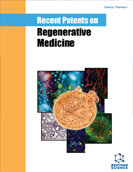Abstract
Multipotent and pluripotent Stem cells are highly clonogenic populations of cells considered the utmost promise in the field of regenerative medicine. By definition stem cells are progenitor cells capable of self-renewal and differentiation hypothetically “ad infinitum” into more specialized cells and mature tissue. Stem cells are commonly classified based on the developmental stage from which they are isolated, although this has been a source of debate amongst stem cell scientists. A commonly accepted approach classifies stem cells into three different groupings: Embryonic Stem Cells (ESCs), Umbilical Cord Stem Cells (UCBSCs) and Adult Stem Cells (ASCs), which includes stem cells from bone marrow (BM), fat tissue (FT), engineered induced pluripotent (IP) and peripheral blood (PB). The increasing emergence of evidence in support of the clinical effectiveness of stem cells has had dramatic implications in our understanding of degenerative disease progression offering the opportunity to develop novel therapeutics that specifically target and eradicate the inherent cause. This review aims to provide an overview of the recent developments in the field of multipotent and pluripotent stem cell new models and therapeutics, embodied in the form of patent documents. Therefore, we refer to a wide range of inventions, with their existing development number of patented clinical trials, which suggest stem cells specific benefits as future degenerative disease guideline uses.
Keywords: Bio-material, extra-cellular matrix, multipotent stem cells, pluripotent stem cells.
 61
61




